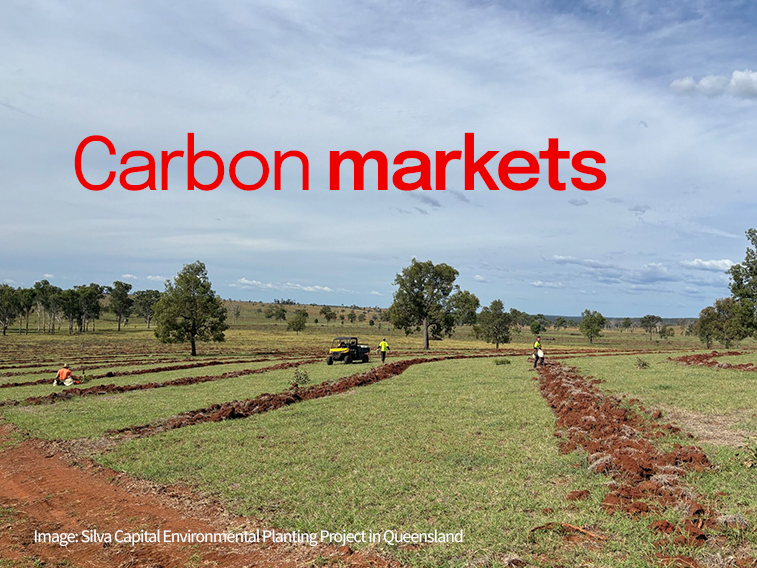Australian carbon project developers see a maturing of institutional financing as key to scaling the market and taking it on a similar trajectory as renewable energy.


Everyone deserves a safe and liveable home, which is why NAB is helping create more suitable homes for Australians in need.
While home ownership forms a key pillar of stability in our economy, soaring property prices in recent years have seen a gap open between the great Australian dream and the housing reality for many in our communities.
This is especially pointed for those on median or lower capped incomes – including those key service workers like nurses and orderlies striving to live in areas where they are needed while the daily costs mount.
It’s a challenge Lighthouse Infrastructure managing director Peter Johnston is taking on through an innovative model that brings private and public capital together with the aim of catalysing structural reform through a shared value solution.
The specialist fund manager is confident he has a clear proof-of-concept in a recent $59 million financing deal for new key worker rental accommodation in Sydney’s Westmead health precinct, in partnership with leading community housing provider SGCH.
“We were able to identify that affordable housing provides the opportunity for a justifiable return to make investors confident in taking their first step into the sector,” Johnston says.
“We are giving confidence to the superannuation fund industry that they can invest at scale, in partnership with the community housing sector, and they can do so in a way that means they don’t have to compromise on [expected] returns.”
The Lighthouse model builds on Johnston’s experience working with community housing providers in financing specialist disability accommodation. It combines private investment capital with public sector income supplements, through GST and other exemptions, to create long-term value for multiple stakeholders – including the tenants.
He says when deployed at an institutional scale the model can have a significant impact in addressing Australia’s chronic housing shortage and generate important societal and economic benefits.
“It’s a real structural challenge that we have to deal with,” Johnston says. “As a society we need a response, a real reaction. Australians who are on capped incomes in key worker groups usually aren’t going to be aggressively competing with other income earners to access property, so we have to make some structural changes.
“I think Lighthouse can play a meaningful role in catalysing this change and create a solution at scale.”
The Westmead project sees NAB customer Lighthouse provide efficient financing for SGCH, the largest community housing provider in NSW, to acquire 85 apartments for key workers in a new development close to the area’s hospitals and educational facilities.
Rents are charged at a maximum 75 per cent of market rates to help key workers on lower incomes live in the area and enhance their productivity and lifestyle benefits by cutting transport times and costs. The savings made can also help provide a potential pathway into home ownership for tenants in the future.
Johnston says the way the structure works harmonises interests of the stakeholders involved over the 10-year investment: yield enhancement is built in for the trade-off in liquidity and control before revisiting the financial arrangements, while the longer term timeframe provides the stability the community housing sector and tenants need.
The model also aims to help developers through buying in bulk, guaranteeing settlement and reducing selling costs. Johnston says developers will be able to maintain margins through reduced risk and costs, while Lighthouse and its community housing partners would negotiate a discount on the purchase price going in.
“The most important part of this model is actually how we implement the acquisition,” Johnston says. “We’re maximising our competitive advantage by focusing on new property, which has GST on it.”
He adds that with the rise in environmental, social and governance (ESG) investing, the sector is an attractive one for institutions looking for appropriate projects to fund.
“Superannuation funds want to invest in projects that actually have long exposures, support workers and create structures within society that actually generate more stable outcomes,” Johnston says. “The community housing and affordable housing sectors need capital investment to be able to provide those assets to people who need them.”
Lighthouse is currently expanding the model into other states in Australia while working with other housing providers and public policymakers to achieve socially responsible goals in line with its mandate to investors.
For now, Johnston says he is simply pleased to be putting “keys in locks” to provide high-quality new housing for 85 essential workers and their families and improving their lives.
“We see that as a real outcome. If there’s a human need we all have, it’s that we are valued within our community. Having access to that sort of opportunity says [for key workers] my community values me and my service.”
NAB Director, Sustainable Finance, James Waddell is working with Lighthouse in line with NAB’s $2 billion commitment to the affordable and specialist housing sector.
“This whole idea we’re pursuing is around improving Australia as a society and as an economy through delivering solutions and creating associated benefits through shared value,” Waddell says.
“What we have goes way beyond just the provision of the housing – there’s productivity, there’s income generated – and so it’s really exciting. It’s all about bringing the public sector and the private sector together to solve these complex challenges.”
Waddell says affordable housing spans accommodation provided by state governments and community housing providers through to mixed housing and commercial build-to-rent projects.
“As a bank we have a special place in the economy and an important role to play to make an impact within our society to help more Australians into homes,” he concludes.
In 2021 NAB reached a cumulative total of $1.8 billion towards the $2 billion commitment to provide financing for affordable and specialist housing by 20231.
____________
1 https://www.nab.com.au/content/dam/nab/documents/reports/corporate/2021-annual-review.pdf
© National Australia Bank Limited. ABN 12 004 044 937 AFSL and Australian Credit Licence 230686.